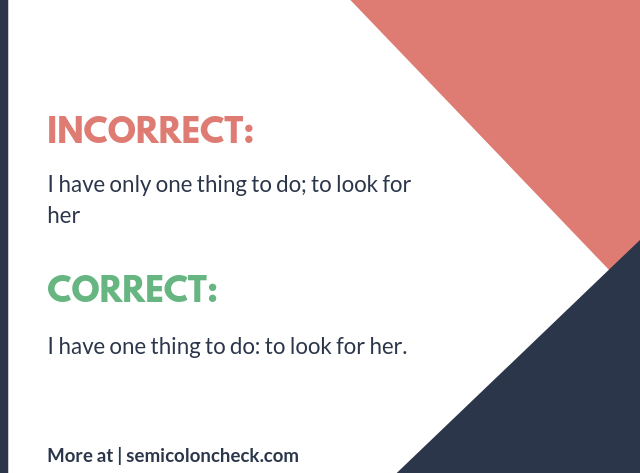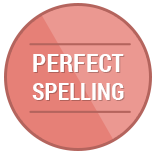The semicolon is an integral part of punctuation in the realm of writing. Indeed, many a masterpiece have used the simple art of the semicolon to draw suspense, tension, and drama in their story-pieces. However, knowing how to use semicolons correctly is easier said than done.
That’s why we are here to demystify the enigma that is the semicolon, and help you use semicolon corrector.
Whether you are penning down a best-seller or writing an essay about your favorite animal, your comprehension of the semicolon will improve immensely!
How Knowing How to Use Semicolon Correctly Improve Your Content Writing
Here are some amazing ways that the correct use of a semicolon can take your writing levels to greater heights!
- Improves your flow: One of the benefits of knowing correct punctuation is that you won’t have to worry about breaking your flow when writing your content. When you have plenty of ideas, you can simply use a semicolon to add them together when writing content.
- Improves suspense: Because semicolons tend to have a longer pause than a comma, they can greatly induce suspense in a reader especially in a particularly tense situation. This can captivate the audience to your content.
- Makes your content easier to read: Instead of having a bunch of run-on sentences proceeding one another, you can simply use a semicolon to create that much needed pause for your reader when they are reading your content.
10 Rules to Using a Semicolon with Your Writing
With this in mind, here are 10 effective rules to remember on how to use a semicolon correctly.
- Rule 1
Semicolons are MAINLY used to create a pause between two or more clauses of a sentence.
- Rule 2
Avoid using a semicolon where a colon is supposed to be in a sentence. For example:
- Incorrect: I have only one thing to do; to look for her
- Correct: I have one thing to do: to look for her
- Rule 3
Semicolons can easily be interchanged to reduce the pause duration between sentences. This is done by substituting the period for the semicolon. For example:
- Give me a call tomorrow. I will give you a definitive answer.
- Give me a call tomorrow; I will give you a definitive answer.
- Rule 4
Do not use a semicolon in the event that a dependent clause comes before an independent. For example:
- Incorrect: Despite their best attempt; they failed
- Correct: Despite their best attempt, they failed.
- Rule 5
Semicolons are also widely used before conjunctions such as however, indeed, namely e.t.c. For example:
- Bring as many items as you would like; namely, the sleeping bag and the matchsticks would be ideal!
- Rule 6
Semicolons are used to join closely related sentences. This means that the second sentence conveys more information about the first sentence.
- The fat dog ran away. The gutter it grew up in seemed like the most reasonable place to escape to.
- The fat dog ran away; the gutter it grew up in seemed like the most reasonable place to escape to.
- Rule 7
There are some few cases when listing items that you can be allowed to use semicolons. In specific cases, the semicolon can be used to separate items in a group, belonging to a group listed as the item.
- The restaurant is an amazing place to sample delicacies such as Ugali, Tanduris, and an assortment of fried meats; entrées such as Mukimo, Githeri, and Fish fillets; and delicious juices such as Apple, Mango, and Pineapple.
- Rule 8
Don’t overuse semi-colons in your content. As much as they showcase creativity, overuse of semicolons can ruin the flow of the content.
- Rule 9
Ensure you know basic differences between clauses in a sentence to help you avoid misusing semicolons when writing content.
- Rule 10
Last but not least, when using semicolons, diversify them throughout your content. practice makes perfect.
What Is the Difference Between the Colon vs Semicolon vs Dash?
Though easily confused, there is a major difference between the colon vs semicolon vs dash.
With that in mind, we will be breaking down the differences and how to use a semicolon and colon with relevant examples.
The Semicolon
As you know, the semicolon is used to create a pause between clauses in a sentence. In terms of pause, it is more pronounced than the comma, but less pronounced than the period.
The Colon
As for how to use the colon, this punctuation mark is used to highlight the beginning of a list in most sentences. Nevertheless, it can be used on other alternatives in the construction and punctuation of a sentence.
The Dash
Last but not least, we have the dash. When it comes to the use of dash, it is one of the most versatile punctuation marks in the English language.
In fact, depending on the context, a dash can be used either as a colon, a parenthesis, or a comma.
However, one important rule you have to understand is that the dash can only be used as a maximum of two appearances in every sentence.
- Comma Example: When the car finally came—six months after being ordered —she decided she no longer was interested in.
- Parentheses Example: Upon discovering the issues with the book —all 60 of them—the publisher requested revisions of them.
- Colon Example: After years of discussions, the jurors came to a shocking verdict—the defendant was guilty.
How to Use Our Free Online Semicolon Checker
If you plan to use the free online semicolon checker, here’s how it will work effectively:
- Start by copying the content that you would like to have checked, insert into the response box.
- Then kick start the program.
- The service’s algorithm will begin reviewing the content and highlight any punctuation issues, suggesting when to use a semicolon in a sentence and proper comma placement.











